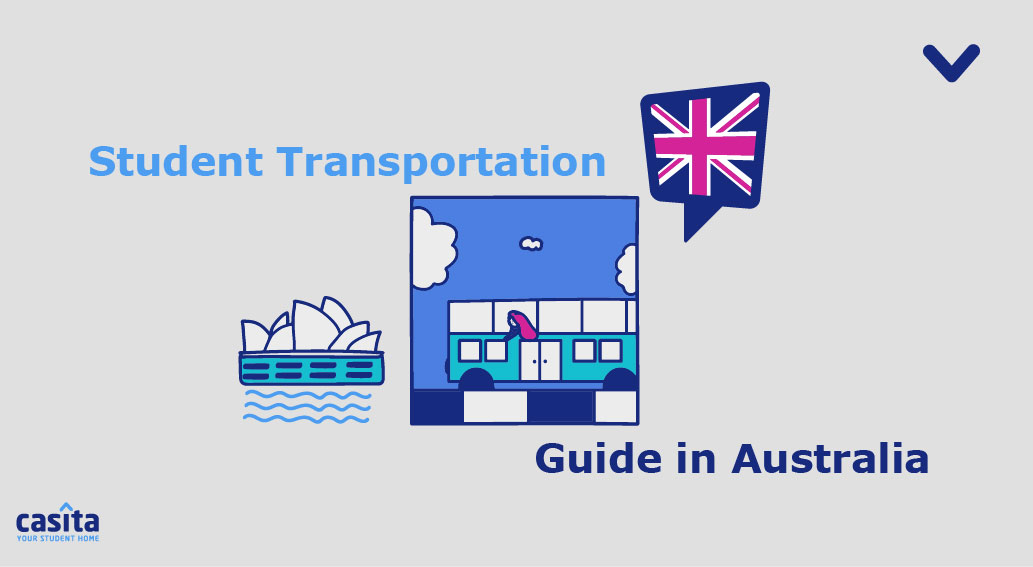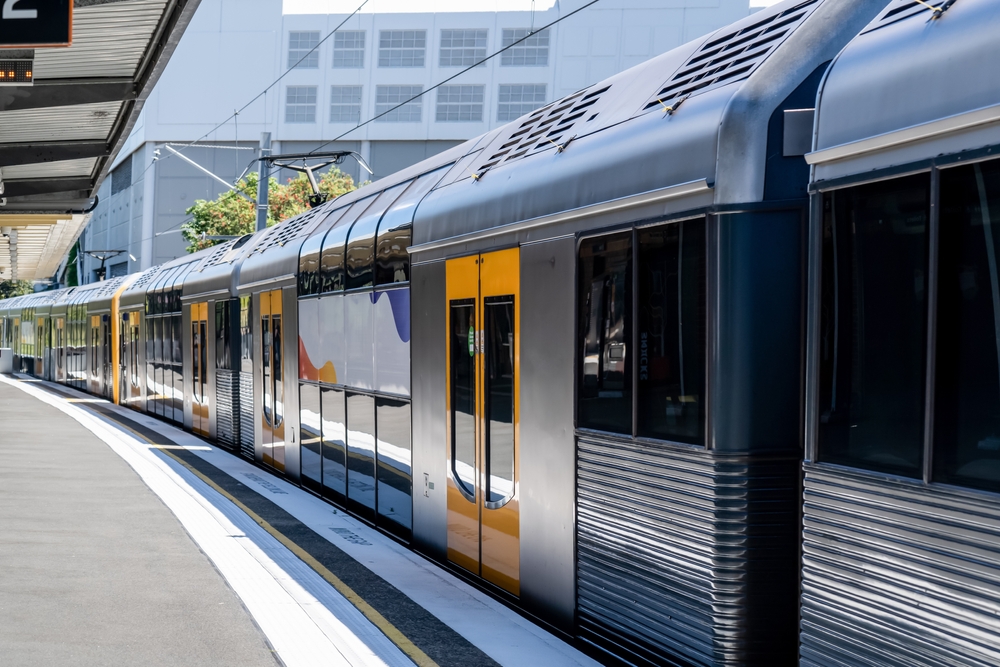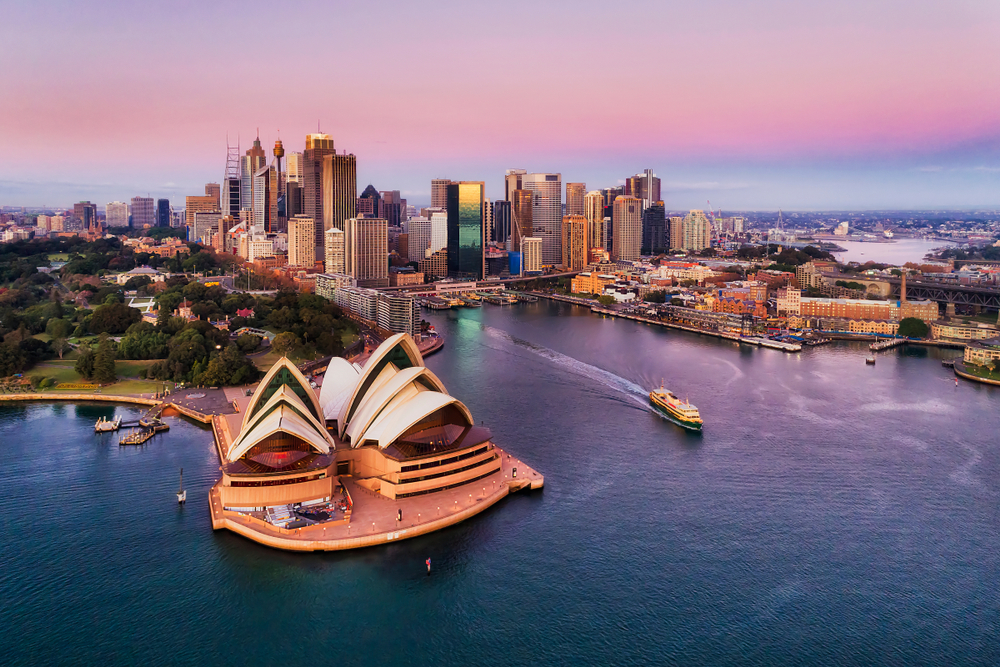Student Transportation Guide in Australia
Travel Preparation
Exploring
8 mins read
Share

Updated at: 16 December, 2024
Published at: 04 December, 2023
By Samir Badawy
Student Transportation Guide in Australia
Travel Preparation
Exploring
8 mins read

Updated at: 16 December, 2024
Published at: 04 December, 2023
By Samir Badawy
Share
According to Yahoo Finance, Australia has some of the best transport systems in the world, with cities such as Sydney being listed 16th as one of the best cities with public transport. Australia has a total of six states and two territories, all of which have their own public transport systems, each of which will be discussed in the “International Student Transportation Guide in Australia." Additionally, we will also be providing general public transport tips for international students in Australia!
.jpg)
Transportation in Australia
In this section of the international student transportation guide in Australia, we’ll list the public transportation options in each state while also providing information on the main travel products for each state!
New South Wales
New South Wales is located on Australia’s East Coast and has Sydney as its capital. Transport for NSW manages the transportation system in New South Wales. Transport for NSW operates trains, buses, ferries, metros, and light rails. It also oversees the movement of private vehicles, heavy vehicles, motorcycles, and bicycles.
Travel Product: Opal Card
The Opal Card is the main transportation card used in New South Wales and has discounts for eligible tertiary students and TAFE students at recognised institutions. You can apply for a Transport Concession Entitlement Card if your institution is not recognised.
While using the Opal Network, you’ll pay no more than $17.80 a day, from Monday to Friday, $8.90 (Fridays, Saturdays, Sundays, and public holidays), and generally no more than $50 a week. These are the adult fare caps and can be more affordable for students. This system includes metro, train, bus, ferry, and light rail services.
You will not be charged to get an Opal card and can get it from various retailers; concession cards, on the other hand, must be applied for online. If you wish to top up your Opal Card, the minimum balance to do so for adult Opal cards is $20 or $10 for concession cards by doing so via retailers or top-up machines, or $10 for adults and $5 for concession cards if topped up online.
Regional NSW TrainLink trains and coaches are also available and can be purchased online for a discount at Transport NSW’s website under Regional Trains and Coaches. You will get a 10% discount for your online booking, or 20% if you reserve it five days in advance.
.jpg)
Victoria
Victoria is located on the east coast and has Melbourne as its capital city. Victoria’s main provider is Public Transport Victoria, which operates Metro Trains, Yarra Trams, V/Line, and buses.
Travel Product: Myki
Myki is the main travel product in Victoria and can be applied to metro trains, Yarra Trams, and buses. Longer bus routes and train rides may require you to use a V/Line paper ticket. International students can be eligible for concession fares, which reduce 50% of the normal fare.
Students studying in Victoria can opt for a state-wide pass, which provides them unlimited travel throughout the state for 90 days for the price of $270, the same price as a zone 1+2 pass. You can also get the yearly state-wide pass for $975. To qualify for the student concession fare, you must be a full-time student and be enrolled in a bachelor’s programme, associate degree, or diploma. Lastly, your institution should be part of the International Student Travel Pass programme.
You can check out other options on Public Transport Victoria’s website!

Queensland
Queensland has Brisbane as its capital and Translink as its main public transport provider. This provider was first introduced in 2003 and has buses, light rail services, ferries, and rail.
Travel Products: Go Card and Paper Tickets
The main travel products for TransLink include paper tickets and the Go Card for South East Queensland.
Translink has concessionary fares for tertiary students who are either at the university or TAFE. You should use your student ID to apply for that, and it provides you with a discount of 50%.
Zones in Queensland include the following:
South East Queensland: This is Queensland’s most comprehensive zone, covering Greater Brisbane, Ipswich, Sunshine Coast, and Gold Coast and excluding Toowoomba and the Sunshine Coast Hinterland.
This network has eight zones; if you get the Go Card (concession fares), prices can start at $1.78 for one zone and go all the way to $10.74 for all eight zones.
You will save 30% of the normal fare with the Go Card. To put that into perspective, a single paper ticket (concession fares) will cost $2.60 for one zone and $15.60 for travelling up to eight zones.
This network has buses, ferries, and trains.
Other zones are primarily serviced by bus and rely mainly on bus travel. Their fares are as follows:
Area | Zones | Main Mode of Transportation | Ticket Type | Concession Fare |
Bowen | 1 | Bus | Daily Paper Ticket | $2.40 |
Bundaberg | 5 | Bus | Daily Paper Ticket | $2.40 - $4.80 |
Cairns (City) | 5 | Bus | Weekly Paper Ticket | $9.60 - $19.20 |
Fraser Coast | 6 | Bus | Weekly Paper Ticket | $9.60 - $21.60 |
Gladstone (City) | 3 | Bus | Weekly Paper Ticket | $9.60 - $14.40 |
Gympie (City) | 11 | Bus | Daily Paper Ticket | $2.40 - $8.40 |
Innisfail region | 2 | Bus | Daily Paper Ticket | $2.40 - $3.00 |
Kilcoy (Town) | 9 | Bus | Daily Paper Ticket | $2.40 - $7.20 |
Rockhampton (City) & Yeppoon | 7 | Bus | Weekly Paper Ticket | $9.60 - $24.00 |
Sunshine Coast Hinterland | 5 | Bus | Daily Paper Ticket | $2.40 - $4.80 |
Toowoomba (City) | 7 | Bus | Weekly Paper Ticket | $9.60 - $24.00 |
Townsville region | 4 | Bus | Weekly Paper Ticket | $9.60 - $16.80 |
Warwick region | 1 | Bus | Daily Paper Ticket | $2.40 |
Whitsundays region | 5 | Bus | Daily Paper Ticket | $2.40 - $4.80 |
Prices depend on the number of zones travelled. For more information, check out the TransLink website!
Additionally, there are other non-TransLink operators, such as Airtrain, where you can use the Go Card with different fares; Surfside Buslines (Gold Coast and northern New South Wales); and Logan Coaches (Jacobs Well to Beenleigh Marketplace).
Western Australia
Western Australia is located on the west coast of Australia and has Perth as its main capital. Western Australia’s main transport authority is the Government of Western Australia’s public transport authority. This authority oversees Transperth, Transwa, TransRegional, and a school bus service.

Transperth
Transperth operates in metropolitan Perth and operates buses, trains, and ferries. Transperth has more than 1500 buses, which serve 281 routes. It also has three ferry boats and 330 rail cars.
Transwa
Transwa has four rail services and 23 coach services. The different train routes include:
The Australind provides two daily return services between Perth and Bunbury.
The Prospector: between Perth and Kalgoorlie
The AvonLink: between Northam and Midland (except public holidays)
The MerredinLink: between Perth and Merredin.
The Transwa coaches cover 29 routes, providing access to more than 240 regional areas.
TransRegional
The TransRegional bus service is an intra-town bus service that operates in 15 towns. These towns are:
Albany
Bridgetown
Broome
Bunbury
Busselton/Dunsborough
Carnarvon
Collie
Esperance
Geraldton
Kalgoorlie
Karratha/Roebourne
Kununurra
Manjimup
Narrogin
Port Hedland
Travel Product: SmartRider
Tertiary students can apply for a SmartRider, where they can get a 20% discount on autoload (the card’s balance automatically reloads when reaching a threshold below $3 for concession users).
With this 20% discount, two sections will cost $0.80, one zone will cost $1.20, and a DayRider (with concession fares) will cost $4.60 for unlimited daily travel. With autoload, the minimum reload amount is $20, while the maximum is $250.
If you opt for traditional loading methods, such as add-value machines, the minimum reload amount is $10, while the maximum is $250.
South Australia
South Australia is located in the centre of the country’s southern coast and is bordered by Western Australia, the Northern Territory, Queensland, New South Wales, and Victoria. South Australia has Adelaide as its capital city. Under the South Australian Public Transport Authority, Adelaide Metro is the main public transport operator in South Australia, which operates buses, trains, and trams.
Regional buses are also there to transport you throughout the state and have the following services:
Adelaide Hills transport services
Barossa, Light and Lower North transport services
Eyre and Western Transport services
Far North transport services
Fleurieu Peninsula transport services
Limestone Coast transport services
Murraylands transport service
Riverland transport services
Yorke and Mid-North transport services
Travel Product: Adelaide MetroCARD
The Adelaide MetroCard is the main travel product and also has an autoload option. The physical Concession MetroCARD costs $3.50 and requires a minimal amount of $5 to be used.
Students with a valid student ID from a recognised South Australian tertiary institution can apply to get this concession card, which can be reloaded in blocks of $5, starting from this amount all the way to $200. Many students opt for transportation bundles such as the Student 14-day pass on a MetroCard for $16.90 or the Student 28-day pass on a MetroCard for $27.80. These passes provide unlimited travel via buses, trains, and trams.
Tasmania
Tasmania is an island located south of the Australian mainland, with Hobart as its capital. The main mode of transportation in Tasmania is the bus, which is overseen by MetroTasmania and operates more than 150 daily trips.
Travel Product: GreenCard
The GreenCard has a concession fare for tertiary students upon turning 19. With this card, a daily cap is applied to your daily commute, which is $5.80 if you first board before 9 a.m. on a weekday, $3.10 if you board after 9 a.m. on a weekday, and $3.10 all day during weekends and public holidays.
Additionally, Tasmania also has ferry transportation between Tasmania and Bruny Island, which is operated by SeaLink. Travel time takes 20 minutes.
The Australian Capital Territory
The Australian Capital Territory is located between Sydney and Melbourne and has the city of Canberra as its capital. Transport Canberra is the main public transportation authority, mainly overseeing buses and light rail. They also have various schemes, such as shared bike schemes, bike shares, and e-scooters. The Canberra light rail, called the Canberra Metro, has 19 stops over a 12-kilometer track. Transport Canberra also has regional buses that go to nearby cities and towns.
Main Travel Product: MyWay
The MyWay card is the main travel card in the Australian Capital Territory for buses and light rail and has concession fares. Similarly to other states, concession cards for tertiary students are available for full-time students in recognised tertiary institutions. For tertiary students, MyWay cards cost $2.50 and have a weekday cap of $4.80 and a weekend and holiday cap of $2.17. The most convenient loading method for the MyWay card is the autoload method, where your card reloads your balance when it falls below $10. You can also load your credit using MyWay agents, ticket vending machines, and other methods such as online payments, Bpay, or over the phone.
The Northern Territory
The Northern Territory is located on the northern coast of Australia and occupies most of the mainland’s centre. The Northern Territory has Darwin as its capital city and the Northern Territory Government as the responsible authority for overseeing public transport and issuing Tap and Ride cards. Buses are the main modes of transport.
Travel Product: Tap and Ride Cards
Concession fares for tertiary students are available for those enrolled in recognised tertiary institutions. The best travel product available is the weekly trip bundle, which provides unlimited transportation for the entire week. It has a $7 concession fare.
Public Transport Tips for International Students in Australia
Lastly, in this student transportation guide in Australia, we’ll provide some of the main things to know or consider before using the Australian public transportation system, which include the following:
Assess Your Travel Needs:
Before applying to any travel product, always ask yourself whether you really require such a product. For instance, if your location is central and you can walk or cycle rather than commute, you may opt for a trip ticket only when necessary.
Always Have Your Student ID Ready:
For concessionary fares, you may often be required to show your student ID, so always ensure it is ready.
Bring Smaller Bills:
Some buses or light rail services allow you to buy a paper ticket from the driver. If that’s the case, make sure you have smaller bills for more convenience.
Make Sure You Tap on and Off (If Applicable):
Some modes of transportation will require you to tap on and off on the card reader, while other travel products are just tapped once; ensure you follow the instructions to avoid any penalties.
Use Journey Planners:
Journey planners are effective in knowing what the best mode of transportation to reach your destination is while providing you with real-time departure and arrival information. These include travel authorities' custom journey planners and Google Maps.
Australia has an extremely diverse public transport system, comprising buses, light rail, trains, taxis, and many more modes of transport. It also provides various travel products and bundles to cater to different travel needs and requirements.
If you found the international student transportation guide in Australia helpful, we also have other helpful resources, such as the Cost of Living in Australia vs UK: A Comprehensive Guide, UK Deposits vs Australia Bonds, Melbourne Cost of Living for Students, Student Guide: The Cost Of Living In Adelaide, among other helpful resources.
Travel Preparation
Exploring
By Samir Badawy
Share
Travel Preparation
Exploring
Updated at:
Published at:
By Samir Badawy
Share





